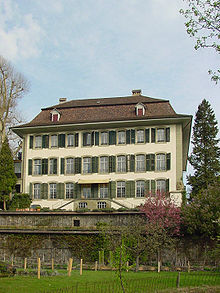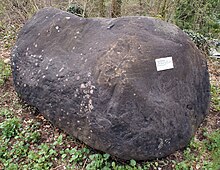
The canton of Bern, or Berne, is one of the 26 cantons forming the Swiss Confederation. Its capital city, Bern, is also the de facto capital of Switzerland. The bear is the heraldic symbol of the canton, displayed on a red-yellow background.
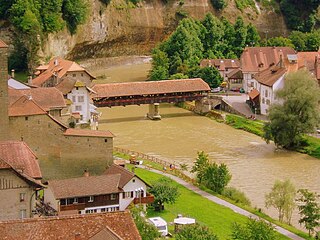
The Sarine or Saane is a major river of Switzerland. It is 128 km (80 mi) long and has a drainage area of 1,892 km2 (731 sq mi). It is a tributary of the Aare.

Seeland is a region in Switzerland, at the south-eastern foot of the mountain range of the Jura Mountains containing the 3 Lakes of Morat, Neuchâtel, and Bienne (Biel). In previous eras, it was the floodplain of the Aare and was thus swampy. After the huge hydrological works Jura water correction, the area drained out and could support more cultivation. Seeland is one of the most important regions in Switzerland for growing vegetables, particularly in the Grand Marais.

Jegenstorf is a municipality in the Bern-Mittelland administrative district in the canton of Bern in Switzerland. On 1 January 2010 the former municipality of Ballmoos merged into Jegenstorf and on 1 January 2014 Münchringen and Scheunen merged into Jegenstorf.

The Junkerngasse is a street in the Old City of Bern, the medieval city center of Bern, Switzerland. It connects the tip of the Aar peninsula to the Münster.

Kasteln Castle is a castle in the municipality of Oberflachs in Canton Aargau, Switzerland. It is located west of the village on a rocky outcrop, surrounded by vineyards and woods. Today, it serves as a boarding school for students with behavioral problems. The immediately adjacent castle Ruchenstein was demolished in 1643, when the small fort was rebuilt into a Schloss Kasteln.

Rudolf von Erlach was a knight and commander of the Swiss Confederation forces at the Battle of Laupen.

The Erlach family was a Bernese patrician family. They first became citizens of Bern around 1300. During the 17th and 18th centuries they were one of the leading families in Bern. For centuries the family served as senior military commanders in both Bern and in foreign armies. They were mayors of Bern and ruled over many other towns and cities in western Switzerland. Several family members received the upper nobility title "Reichsgraf".
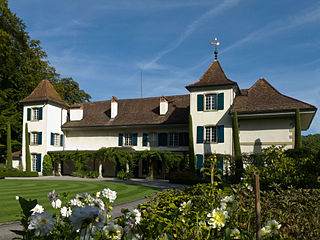
Bremgarten Castle is a castle in the municipality of Bremgarten of the canton of Bern in Switzerland. It is a Swiss heritage site of national significance.

Burgdorf Castle is a castle in the municipality of Burgdorf in the canton of Bern in Switzerland. It is a Swiss heritage site of national significance.

Erlach Castle is a castle in the municipality of Erlach of the Canton of Bern in Switzerland. It is a Swiss heritage site of national significance.

Jegenstorf Castle is a castle in the municipality of Jegenstorf of the Canton of Bern in Switzerland. It is a Swiss heritage site of national significance.

Oberhofen Castle is a castle in the municipality of Oberhofen of the Canton of Bern in Switzerland. It is a Swiss heritage site of national significance.

Rümligen Castle is a castle in the municipality of Rümligen of the Canton of Bern in Switzerland. It is a Swiss heritage site of national significance.

Spiez Castle is a castle in the municipality of Spiez of the Swiss canton of Bern. It is a Swiss heritage site of national significance.

Wimmis Castle is a castle in the municipality of Wimmis of the Canton of Bern in Switzerland. It is a Swiss heritage site of national significance.

The Altes Schloss Bümpliz is a castle in the section of Bümpliz-Oberbottigen in the city of Bern of the canton of Bern in Switzerland.

Oberried Estate is an estate in the municipality of Belp in the canton of Bern in Switzerland. It is a Swiss heritage site of national significance.
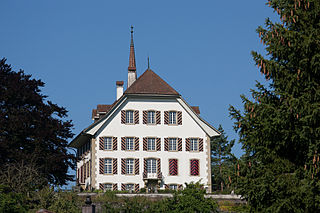
Riggisberg Castle is a castle in the municipality of Riggisberg of the canton of Bern in Switzerland.
